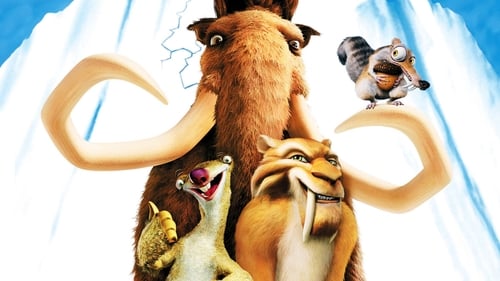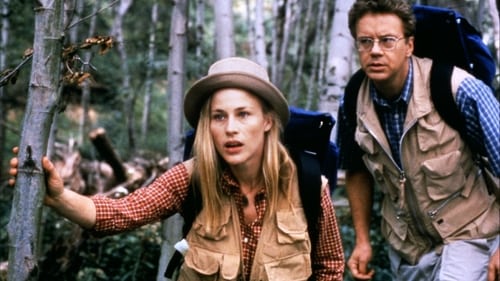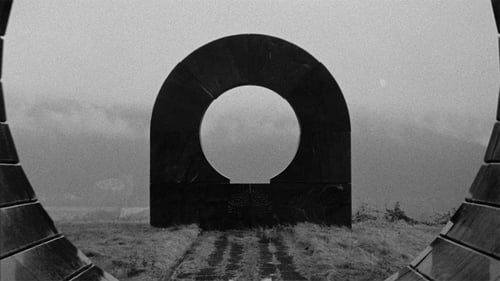Vývoj člověka III. (1955)
Жанр : документальный
Время выполнения : 0М
Директор : Fedor Kaucký
Писатель : Fedor Kaucký
Краткое содержание

Веселые и опасные приключения героев. 20 тыс. лет назад. Чтобы избежать приближающегося из-за наступления ледникового периода холода, животные мигрируют на юг. Однако некоторые из них все-таки решают остаться — одинокий, угрюмый мамонт Манфред, а также бесшабашный ленивец Сид. Случайно эта парочка наталкивается на человеческого детеныша. Они решаются вернуть его людям и отправляются в путешествие. По пути они встречают саблезубого хитрого тигра. И теперь этой веселой компании предстоят забавные приключения!

После успешно выполненного задания космический корабль устремляется к Земле, хотя астронавты отчетливо понимают, что на земле из-за парадокса Эйнштейна уже прошло несколько столетий, а значит нет уже никого на планете, кто даже отдаленно мог бы назваться близким для них человеком.Но когда звездолет терпит катастрофу на непонятной планете, совсем не похожей на добродушную матушку-Землю, оставшиеся в живых, но потерявшие все имущество космонавты вдруг с ужасом понимают, что круто попали…Попали в плен к суровым и агрессивным человекоподобным монстрам, более похожим на горилл из их прошлой жизни. Где мы? И что происходит? Вот вопросы, на которые пока не видно ответа…

Лила страдает врожденным дефектом - у нее повышенная волосатость тела. Повышенная настолько, что даже в медицинской энциклопедии рядом с описанием этого феномена помещена ее фотография. Пытаясь найти себя, Лила долгое время жила в лесу и даже написала несколько книг о природе и месте человека в ней, но в жизни всегда настает момент, когда самке больше всего нужна пара.
И пару Лила находит в профессоре Натане Бронфмане - педантичном зануде, изучающим проблему обучения мышей хорошим манерам. Но однажды на лесной прогулке они натыкаются на дикаря, воспитанного человеком, считавшим себя обезьяной. Натан видит в этом возможность проиллюстрировать свою теорию обучения существ, но самого Паффа, как он окрестил находку, никто не спросил, надо ли ему учиться.

Через два миллиарда лет раса улучшенных людей оказывается на грани уничтожения из-за космических изменений. Единственный способ избежать катастрофы и исчезновения вида - это попытаться установить связь со своими предками и изменить направление их цивилизации.

40, 000 years ago the steppes of Eurasia were home to our closest human relative, the Neanderthals. Recent genetic and archaeological discoveries have proven that they were not the dim-witted cave dwellers we long thought they were. In fact, they were cultured, technologically savvy and more like us than we ever imagined! So why did they disappear? We accompany scientists on an exciting search for an answer to this question and come to a startling conclusion …

Nova and National Geographic present exclusive access to an astounding discovery of ancient fossil human ancestors.

Преуспевающий художник-анималист, лауреат Государственной премии, в подвале старого дома обнаруживает архив безвестного режиссера-документалиста, трагически погибшего во время съемок археологической экспедиции в африканской пустыне, который позволяет выдвинуть новую гипотезу о причинах перехода предков человека к передвижению на задних конечностях. Параллельно развитию основного сюжета (с художником) идет линия подготовки группы людей гориллоподобной внешности к ограблению банка.

A feature documentary about the journey of mankind to discover our true force and who we truly are. It is a quest through science and consciousness, individual and planetary, exploring our relationships with ourselves, the world around us and the universe as a whole.

The cutting edge group known as transhumanists see a beautiful future brought about by artificial intelligence, life extension, and cybernetics. What one must realize before getting carried away with such utopian dreams is that transhumanism was born out of the elitist pseudo-science eugenics. This documentary provides vital information on the history of eugenics and its new cutting edge transformation.

Explores the story behind the discovery of an early primate fossil, Darwinius masillae, nicknamed Ida, in a shale quarry in Germany. The fossil is believed to be around 47 million years old, and is extraordinarily well-preserved. Originally unearthed in 1983, Ida lay in the hands of a private collector for 20 years before it was shown to a Norwegian paleontologist, Dr Jørn Hurum. Realising that Ida could turn out to be a significant missing link between modern primates, lemurs and lower mammals, he persuaded the Natural History Museum in Oslo to purchase the fossil and assembled an international team of experts to study it. Their findings were announced in a press conference and the online publication of a scientific paper on 19 May 2009.

Propelled by Claude Cloutier’s signature drawing style and absurdist humour, this animated short offers an overview of the evolution of life on Earth from rock to human, with some surprising twists in between.

NOVA's groundbreaking investigation explores how new discoveries are transforming views of our earliest ancestors. Becoming Human explores the origins of us -where modern humans and our capacities for art, invention, and survival came from, and how our social history led to 3-5% of our genetic heritage being Neanderthal. Featuring interviews with world-renowned scientists, footage shot in the trenches as fossils were unearthed, and stunning computer-generated animation, Becoming Human brings early hominids to life, examining how they lived and how we became the creative and adaptable modern humans of today.
In gripping forensic detail, we meet: Selam, the amazingly complete remains of a 3 million year-old child, packed with clues to why we split from the apes, came down from the trees, and started walking upright; Turkana Boy -a tantalizing fossil of Homo erectus, the first ancestor to leave Africa and colonize the globe. What led to this first great African exodus?


The events and coincidences that led to rapid advances in human intelligence 50,000 years ago.

Looking at whether the history of early human evolution should be rewritten. For decades, most experts have been convinced that Africa is the cradle of mankind and many fossil finds from Kenya, Ethiopia, South Africa and Chad seemed to prove it.

Can Homo sapiens evolve into Homo spatius? For over 50 years now, we have been testing our human nature in our effort to conquer outer space, and still 30 years away from a possible human exploration of Mars, a question remains: Can our body take such travels? Will it ever adapt? Combining human adventure and the exploration of the human body, this film offers unique insights into the physical and psychological effects of space travel on the Astronauts and measures the impact on medical sciences.

In Morocco, new excavations on the site of Jebel Irhoud upset the generally accepted view of the dating of the appearance of man.

For Millions of years, our planet has been floating in space. Millions of creatures have lived on its surface. Many a quaint being was among them, but they affected only our, human imagination, for in the evolutionary struggle we are the only ones who have obtained the advantage of reason.

Science Breakthroughs: Homo Naledi Discovered in 2013, new and puzzling finding of small-skulled fossils of Homo Naledi has scientists trying to understand whether Homo Sapiens lived at the same time as Homo Naledi, and how Homo Naledi communities may have lived.

The story of the evolution of life on Earth in animated form.















